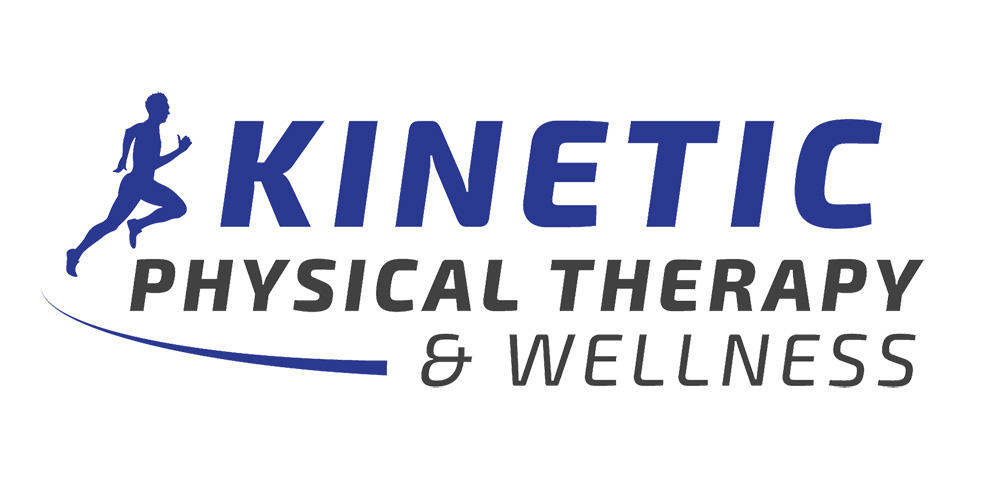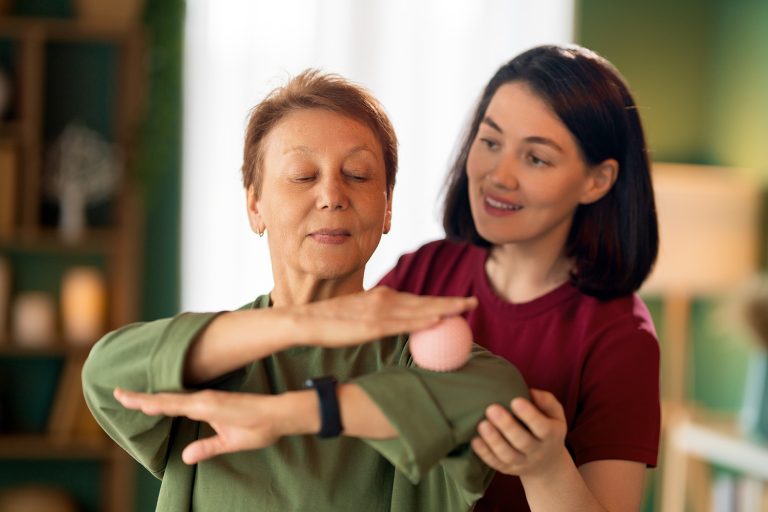

Occupational Therapy Techniques to Manage Stress and Anxiety
At Kinetic Physical Therapy and Wellness in Greenville, NC, we believe that individualized patient care is the key to optimal outcomes. That belief holds especially true when addressing mental health challenges such as stress and anxiety. Occupational therapy techniques provide practical, evidence-based strategies to help individuals regain control over their daily lives and promote emotional well-being. These methods are particularly effective because they focus on real-world application—transforming everyday routines into opportunities for healing and balance.
Why Use Occupational Therapy Techniques to Manage Stress and Anxiety?
Stress and anxiety are more than just fleeting feelings—they can disrupt daily life, impair productivity, and negatively impact both physical and mental health. Many people struggle with overwhelming schedules, chronic tension, sleep disturbances, and difficulty maintaining focus. Fortunately, occupational therapy techniques are specifically designed to address the root causes of these symptoms by helping people develop healthy, sustainable habits.
Occupational therapy focuses on the connection between mental health and function. Therapists guide individuals through personalized routines, coping strategies, and environmental modifications that support relaxation and mental clarity. These techniques help break the cycle of stress and anxiety, allowing patients to participate more fully in their work, relationships, and self-care routines.
How Occupational Therapy Techniques Improve Daily Life
Occupational therapy techniques are grounded in the principle that engaging in meaningful activities can significantly enhance emotional resilience. By structuring routines, reducing sensory overload, and building self-efficacy, these approaches help patients feel more grounded and capable.
Some of the most effective occupational therapy techniques include:
- Deep Pressure and Sensory Integration: This method uses tactile stimulation like weighted blankets or compression garments to calm the nervous system.
- Time Management Tools: Helping patients establish routines with calendars, timers, or checklists reduces overwhelm and improves focus.
- Mindfulness and Breathing Exercises: Therapists teach grounding techniques that can be used in stressful moments to regulate the body’s stress response.
- Task Simplification: Breaking complex tasks into manageable steps reduces anxiety and fosters a sense of achievement.
- Environmental Modifications: Adjusting lighting, sound, or workspace layout can create a calmer environment conducive to mental wellness.
Each of these strategies is customized based on the patient’s unique needs through occupational therapy sessions.
Common Daily Stressors Addressed with Occupational Therapy Techniques
One of the major strengths of occupational therapy techniques is their ability to address stress and anxiety tied to daily living tasks. Unlike traditional talk therapy, which focuses on insight and emotional processing, occupational therapy focuses on function—what you need to do and how to do it more effectively.
These techniques can help with:
- Morning Routines: Establishing a predictable, low-stress start to the day
- Workplace Stress: Identifying triggers and using ergonomic or cognitive strategies to improve performance
- Sleep Hygiene: Creating calming bedtime rituals and reducing nighttime overstimulation
- Meal Prep and Nutrition: Organizing food planning and preparation in a non-overwhelming way
- Parenting and Caregiving: Balancing responsibilities and preventing burnout
In every scenario, occupational therapy techniques are adapted to fit the person’s lifestyle, making them easy to apply and maintain.
Mindfulness-Based Occupational Therapy Techniques
Mindfulness is one of the core pillars of occupational therapy techniques for stress and anxiety. These practices increase awareness of the present moment and reduce rumination—two key contributors to mental wellness.
Occupational therapists might use:
- Guided Meditation Sessions: Helping clients focus on breathing and bodily sensations
- Mindful Movement: Simple stretching or yoga paired with breath work
- Sensory Awareness Exercises: Using textures, smells, and sounds to center attention
- Mindful Eating: Encouraging presence and enjoyment during meals
When taught through occupational therapy, mindfulness becomes more than a mental exercise—it becomes a functional tool for managing anxiety in real time.
Cognitive and Behavioral Techniques Used in Occupational Therapy
In addition to sensory and mindfulness strategies, many occupational therapy techniques integrate cognitive-behavioral principles to build healthier thought patterns. These might include:
- Cognitive Restructuring: Helping individuals reframe negative self-talk that fuels stress
- Activity Scheduling: Creating balance between work and rest to avoid burnout
- Goal Setting: Establishing short-term, achievable goals to promote motivation and a sense of progress
- Journaling: Encouraging reflective practices to identify emotional triggers and patterns
The combination of mental and physical tasks strengthens both emotional regulation and executive function, which are commonly impaired by chronic anxiety.
Creating a Personalized Plan with Occupational Therapy Techniques
Every patient at Kinetic Physical Therapy and Wellness receives a customized plan tailored to their specific challenges and goals. Our therapists conduct in-depth evaluations to identify areas of stress, assess functional limitations, and co-create a routine that feels empowering.
During each occupational therapy session, progress is monitored and techniques are adjusted to reflect the patient’s growth. This dynamic, responsive approach is what makes occupational therapy techniques so effective for managing long-term stress and anxiety.
The Lasting Impact of Occupational Therapy Techniques
Consistency is key when managing anxiety, and occupational therapy techniques help patients develop habits they can sustain long after therapy ends. These techniques equip individuals with tools to navigate challenges, reset after setbacks, and build lives that feel calm, meaningful, and productive.
Some long-term benefits include:
- Better sleep quality and energy levels
- Reduced frequency and intensity of anxiety episodes
- Increased independence in daily routines
- Improved concentration and task completion
- Enhanced self-confidence and coping abilities
With occupational therapy, patients can stop just surviving and start thriving.
Start Occupational Therapy Techniques for Stress Relief Today
At Kinetic Physical Therapy and Wellness in Greenville, NC, we understand that mental health is just as important as physical health. Our compassionate therapists specialize in occupational therapy techniques that empower individuals to reduce stress and anxiety while reclaiming their everyday lives.
If stress and anxiety are keeping you from functioning at your best, we’re here to help. Discover how our personalized occupational therapy services can make a lasting difference in your routine and your mental well-being.
Take the first step today—schedule a consultation and begin your journey to calm, confidence, and control.
Please Share
categories
Recent Posts

Occupational Therapy Techniques to Manage Stress and Anxiety
At Kinetic Physical Therapy and Wellness in Greenville, NC, we believe that individualized patient care is the key to optimal outcomes. That belief holds especially true when addressing mental health challenges such as stress and anxiety. Occupational therapy techniques provide practical, evidence-based strategies to help individuals regain control over their daily lives and promote emotional well-being. These methods are particularly effective because they focus on real-world application—transforming everyday routines into opportunities for healing and balance.
Why Use Occupational Therapy Techniques to Manage Stress and Anxiety?
Stress and anxiety are more than just fleeting feelings—they can disrupt daily life, impair productivity, and negatively impact both physical and mental health. Many people struggle with overwhelming schedules, chronic tension, sleep disturbances, and difficulty maintaining focus. Fortunately, occupational therapy techniques are specifically designed to address the root causes of these symptoms by helping people develop healthy, sustainable habits.
Occupational therapy focuses on the connection between mental health and function. Therapists guide individuals through personalized routines, coping strategies, and environmental modifications that support relaxation and mental clarity. These techniques help break the cycle of stress and anxiety, allowing patients to participate more fully in their work, relationships, and self-care routines.
How Occupational Therapy Techniques Improve Daily Life
Occupational therapy techniques are grounded in the principle that engaging in meaningful activities can significantly enhance emotional resilience. By structuring routines, reducing sensory overload, and building self-efficacy, these approaches help patients feel more grounded and capable.
Some of the most effective occupational therapy techniques include:
- Deep Pressure and Sensory Integration: This method uses tactile stimulation like weighted blankets or compression garments to calm the nervous system.
- Time Management Tools: Helping patients establish routines with calendars, timers, or checklists reduces overwhelm and improves focus.
- Mindfulness and Breathing Exercises: Therapists teach grounding techniques that can be used in stressful moments to regulate the body’s stress response.
- Task Simplification: Breaking complex tasks into manageable steps reduces anxiety and fosters a sense of achievement.
- Environmental Modifications: Adjusting lighting, sound, or workspace layout can create a calmer environment conducive to mental wellness.
Each of these strategies is customized based on the patient’s unique needs through occupational therapy sessions.
Common Daily Stressors Addressed with Occupational Therapy Techniques
One of the major strengths of occupational therapy techniques is their ability to address stress and anxiety tied to daily living tasks. Unlike traditional talk therapy, which focuses on insight and emotional processing, occupational therapy focuses on function—what you need to do and how to do it more effectively.
These techniques can help with:
- Morning Routines: Establishing a predictable, low-stress start to the day
- Workplace Stress: Identifying triggers and using ergonomic or cognitive strategies to improve performance
- Sleep Hygiene: Creating calming bedtime rituals and reducing nighttime overstimulation
- Meal Prep and Nutrition: Organizing food planning and preparation in a non-overwhelming way
- Parenting and Caregiving: Balancing responsibilities and preventing burnout
In every scenario, occupational therapy techniques are adapted to fit the person’s lifestyle, making them easy to apply and maintain.
Mindfulness-Based Occupational Therapy Techniques
Mindfulness is one of the core pillars of occupational therapy techniques for stress and anxiety. These practices increase awareness of the present moment and reduce rumination—two key contributors to mental wellness.
Occupational therapists might use:
- Guided Meditation Sessions: Helping clients focus on breathing and bodily sensations
- Mindful Movement: Simple stretching or yoga paired with breath work
- Sensory Awareness Exercises: Using textures, smells, and sounds to center attention
- Mindful Eating: Encouraging presence and enjoyment during meals
When taught through occupational therapy, mindfulness becomes more than a mental exercise—it becomes a functional tool for managing anxiety in real time.
Cognitive and Behavioral Techniques Used in Occupational Therapy
In addition to sensory and mindfulness strategies, many occupational therapy techniques integrate cognitive-behavioral principles to build healthier thought patterns. These might include:
- Cognitive Restructuring: Helping individuals reframe negative self-talk that fuels stress
- Activity Scheduling: Creating balance between work and rest to avoid burnout
- Goal Setting: Establishing short-term, achievable goals to promote motivation and a sense of progress
- Journaling: Encouraging reflective practices to identify emotional triggers and patterns
The combination of mental and physical tasks strengthens both emotional regulation and executive function, which are commonly impaired by chronic anxiety.
Creating a Personalized Plan with Occupational Therapy Techniques
Every patient at Kinetic Physical Therapy and Wellness receives a customized plan tailored to their specific challenges and goals. Our therapists conduct in-depth evaluations to identify areas of stress, assess functional limitations, and co-create a routine that feels empowering.
During each occupational therapy session, progress is monitored and techniques are adjusted to reflect the patient’s growth. This dynamic, responsive approach is what makes occupational therapy techniques so effective for managing long-term stress and anxiety.
The Lasting Impact of Occupational Therapy Techniques
Consistency is key when managing anxiety, and occupational therapy techniques help patients develop habits they can sustain long after therapy ends. These techniques equip individuals with tools to navigate challenges, reset after setbacks, and build lives that feel calm, meaningful, and productive.
Some long-term benefits include:
- Better sleep quality and energy levels
- Reduced frequency and intensity of anxiety episodes
- Increased independence in daily routines
- Improved concentration and task completion
- Enhanced self-confidence and coping abilities
With occupational therapy, patients can stop just surviving and start thriving.
Start Occupational Therapy Techniques for Stress Relief Today
At Kinetic Physical Therapy and Wellness in Greenville, NC, we understand that mental health is just as important as physical health. Our compassionate therapists specialize in occupational therapy techniques that empower individuals to reduce stress and anxiety while reclaiming their everyday lives.
If stress and anxiety are keeping you from functioning at your best, we’re here to help. Discover how our personalized occupational therapy services can make a lasting difference in your routine and your mental well-being.
Take the first step today—schedule a consultation and begin your journey to calm, confidence, and control.
Please Share





